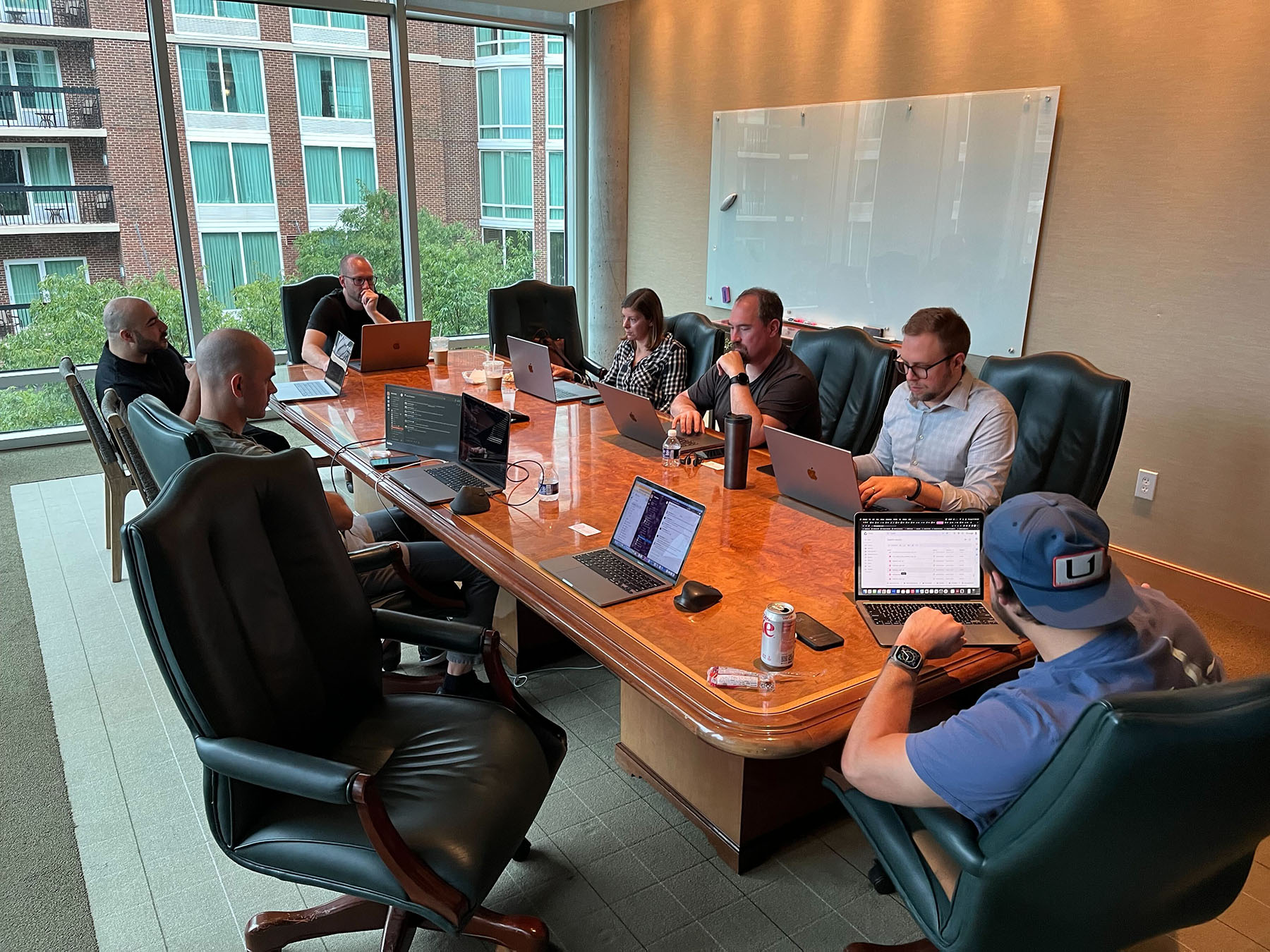Launch Faster: Minimum Viable Product Explained
In the dynamic world of product development, speed and adaptability are crucial. For small businesses aiming to make a significant impact, the concept of a Minimum Viable Product (MVP) offers a strategic pathway to success. By focusing on MVP development, businesses can launch faster, test their ideas in real-world scenarios, and refine their offerings based on actual user feedback. This approach not only minimizes risk but also maximizes the potential for innovation and growth.
Understanding the Minimum Viable Product
A Minimum Viable Product is the most pared-down version of a product that can still be released to the market. It includes only the core features necessary to address the primary needs of early adopters. The MVP is not about creating a perfect product; rather, it’s about creating a product that is viable enough to test hypotheses and gather valuable insights.
Key Characteristics of an MVP
- Core Functionality: An MVP, or minimum viable product, focuses on delivering the essential features that solve the primary problem for the target audience.
- User Feedback: It is designed to collect maximum learning with minimal effort, allowing businesses to understand user preferences and behaviors.
- Iterative Development: The MVP is the starting point for continuous improvement, enabling iterative enhancements based on real-world data.
Fast-tracking success in product development hinges on mastering the MVP concept. For small businesses, this is particularly transformative. By prioritizing MVP development, companies meticulously streamline their innovation process.
Implementing a Minimum Viable Product strategy empowers businesses to navigate swiftly through market challenges. This can significantly reduce time-to-market while ensuring that the product resonates with its audience. MVPs are about creating value with agility.
By releasing an MVP, businesses gather indispensable user insights which guide iterative refinements. This data-driven approach not only economizes resources but also accelerates the alignment of the product with customer needs. In turn, companies foster a culture of continuous improvement.
The beauty of the MVP lies in its capacity to unveil true user demands, thus transforming assumptions into actionable strategies. It’s a smart leap from concept to creation, where ingenuity meets pragmatism, carving a path toward sustainable growth.
Harness the power of MVP development to amplify your vision and transition seamlessly from concept to market leader.
The Importance of Understanding Your Persona
In the realm of MVP development, understanding your target audience is paramount. Crafting a Minimum Viable Product without a deep insight into your user’s needs is like navigating a ship without a compass. Identifying and building comprehensive user personas ensures that the MVP aligns closely with the desires and problems of your target market. Personas are detailed narratives of your potential customers, encapsulating their demographics, behaviors, motivations, and challenges. They serve as a lens through which your product development efforts can be focused and refined.
Developing User Stories
Once you have your personas, the next logical step is to develop user stories. These are imaginative narratives that describe how your product will meet the needs of your users in real scenarios. User stories provide a roadmap for ensuring that the minimum viable product not only possesses the requisite features but also integrates them seamlessly into user experiences. Each user story represents a piece of functionality that delivers visible value to your end users. This approach helps prioritize features that truly matter, ensuring that the MVP is not bogged down by unnecessary elements.
Conducting Market Research
Market research is the bedrock upon which successful MVP development stands. It offers crucial insights into industry trends, competitor landscapes, and consumer behavior patterns. By understanding the broader market context, small businesses can tailor their MVPs to meet existing gaps and emerging demands. This research paves the way for innovative positioning and enables businesses to predict and pivot according to market fluctuations. Armed with this knowledge, the MVP becomes not just a product, but a compelling offering that meets and anticipates user needs.
The Synergy of Persona, User Stories, and Market Research
The triumvirate of persona understanding, user stories, and market research constitutes a potent strategy for small businesses keen on leveraging MVP development. When these elements are harmoniously integrated, they ensure that the MVP is deeply rooted in reality—targeted at real people, solving genuine problems, and competing effectively in the marketplace.
By immersing in these processes, businesses are not just responding to user demands; they are anticipating them. This holistic approach transforms MVPs into dynamic platforms that support adaptability and resilience, thereby accelerating the journey from a fledgling concept to a market leader.
Embark on your MVP development with clarity and confidence: know your personas, craft with empathy through user stories, and remain ever-vigilant with market intelligence. This is how small businesses grow beyond expectations, transforming visions into tangible, market-shaping realities.
Unlocking Proprietary Success: Addressing Market Gaps
In the competitive landscape of product development for small businesses, uncovering and exploiting proprietary advantages can spell the difference between fleeting success and lasting impact. Selecting a unique element—something proprietary to your business—or honing in on an unaddressed gap in the market, becomes a decisive strategy in establishing market success. This approach underlines the importance of proximity: understanding how close you can get to the core of a customer’s problem and transforming that insight into a proprietary offering.
Identifying Proprietary Elements
In a world teeming with innovations, what can your business uniquely offer? By focusing on proprietary elements—special features, patented technology, or unique processes—you can carve out a niche that sets your MVP apart. This uniqueness is not just about novelty but about delivering unparalleled value that competitors cannot easily replicate. Ensuring that your MVP includes this proprietary touch will not only attract early adopters but also build a strong foundation of brand loyalty and competitive advantage.
For small businesses, this often means looking inward to leverage internal strengths or previously untapped capabilities. By integrating these distinctive competencies into your MVP, you provide a compelling reason for customers to choose your product over others. This tailored advantage positions your business as a pioneer in solving specific customer issues, creating an affinity that goes beyond transactional relationships.
Bridging Market Gaps
Understanding the nuances of unfulfilled needs within your industry is pivotal. By conducting thorough market analysis and leveraging tools like SWOT (Strengths, Weaknesses, Opportunities, Threats) analyses, small businesses can pinpoint existing gaps that larger companies might overlook. This selective focus allows you to tailor your MVP specifically to these unmet demands, transforming potential gaps into profitable opportunities.
The journey from identifying a gap to determining how close your MVP can get to the root cause involves deep customer empathy and relentless innovation. It’s about asking the right questions: How are current solutions falling short? What latent needs are not being addressed by existing products? In answering these, your MVP not only addresses latent customer desires but becomes the go-to solution for complex challenges that others have failed to resolve.
From Insight to Success: The Proximity Equation
The closer you can get your MVP to the heart of a customer’s problem, the stronger your market position becomes. This is the essence of the proximity equation—crafting solutions that resonate deeply because they stem from genuine insight. By developing an MVP that is not only viable but also keenly attuned to proprietary and market-specific needs, small businesses can unlock new realms of success.
This proactive approach fuels a cycle of continuous refinement and innovation. It fosters a brand identity that stands for excellence and relevance, ensuring your product remains irreplaceable as market dynamics evolve. By championing proximity in your MVP development, you align your business with the pulse of the market, setting the stage for growth that is both sustainable and transformative.
Engage with these strategies and watch as your small business ascends from being an industry participant to an influential market leader, harnessing the power of the minimum viable product to transcend expectations and cultivate robust, enduring success.
The Benefits of MVP Development
Accelerated Time to Market
By concentrating on the core features, businesses can significantly reduce the time required to launch their product. This rapid deployment allows companies to enter the market quickly, gaining a competitive edge and establishing a presence before competitors.
Cost Efficiency
Developing a minimum viable product requires fewer resources compared to a full-scale product. This cost-effective approach is particularly advantageous for small businesses with limited budgets, allowing them to allocate resources strategically and avoid unnecessary expenditures.
Real-World Validation
An MVP provides an opportunity to test the product in a real-world environment. This validation process helps businesses identify what works and what doesn’t, ensuring that subsequent iterations are aligned with market demands and user expectations.
Enhanced Learning and Adaptability
The feedback loop created by MVP development is invaluable. By engaging with early adopters, businesses can gather insights that inform future development, leading to a product that truly resonates with its audience. This adaptability is key to long-term success in a rapidly changing market.
Steps to Successful MVP Development
- Identify the Problem: Clearly define the problem your product aims to solve. Understanding the pain points of your target audience is crucial for developing a relevant MVP.
- Define Core Features: Focus on the essential features that address the primary problem. Avoid the temptation to include additional functionalities that can be added later.
- Build the MVP: Develop the MVP with a focus on quality and usability. Ensure that it delivers a seamless user experience, even with limited features.
- Launch and Gather Feedback: Release the MVP to a select group of early adopters. Collect feedback and analyze user interactions to gain insights into their needs and preferences.
- Iterate and Improve: Use the feedback to make informed decisions about future development. Continuously refine and enhance the product to better meet the needs of your audience.
Conclusion
Embracing the MVP development approach empowers small businesses to innovate with confidence. By launching a Minimum Viable Product, companies can test their ideas, learn from real-world interactions, and adapt swiftly to market demands. This strategic methodology not only accelerates time to market but also lays the foundation for sustainable growth and success. As you embark on your product development journey, remember that the MVP is not the end goal but the beginning of an exciting path toward creating a product that truly makes a difference.
For more on this subject, view our guide to creating an MVP.
For a checklist that you can use in your process of developing your MVP, please click HERE.
You can also schedule a non-obligation with our expert team members to discuss your project HERE.





